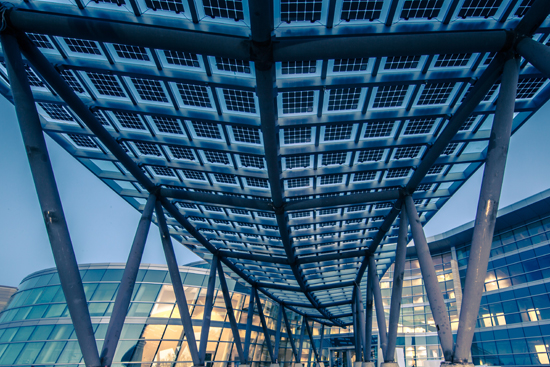Lightweighting With Aluminum: The Growing Trend for Architects Everywhere
Durable and Non-Corrosive Aluminum
New manufacturing processes such as CNC machining have allowed architects to realize the benefits of aluminum as an extrudable material. One of the main benefits of aluminum is its durability. Unlike steel or cast iron, aluminum forms an oxidized layer that is impermeable to oxygen and is corrosion resistant. Steel and cast iron will rust as oxygen continues to “eat away” at the surface. Only stainless steel provides a similar protection to aluminum because of the chromium added to the steel through the manufacturing process. Aluminum is corrosion resistant and design professionals who select the correct classification of aluminum for their construction project will provide a material with great life-cycle advantages.
Cast aluminum is the material used in extrusions. This metal is composed of approximately 85 percent of aluminum along with other components. The manufacturing components of aluminum through an electro-chemical processes, determines the varied grades of aluminum. According to a report by Crane Materials International (CMI) “Aluminum is actually a very active metal, meaning that its nature is to oxidize very quickly. While a weakness for most metals, this quality is actually the key to its ability to resist corrosion. When oxygen is present (in the air, soil or water), aluminum instantly reacts to form aluminum oxide. This aluminum oxide layer is chemically bound to the surface, and it seals the core aluminum from any further reaction. This is quite different from oxidation (corrosion) in steel, where rust puffs up and flakes off, constantly exposing new metal to corrosion. Aluminum’s oxide film is tenacious, hard and instantly self-renewing.”i
The American National Standard Institute (ANSI) numbering system is used to classify aluminum alloys. ANSI numbers describe the tensile strength, corrosion resistance and workability of aluminum. The most common series of aluminum specified for use in long span or large structures are numbered between 5000 and 7000 (the strongest alloy). Structural systems generally use 6061 – T6 alloy. Architects and engineers who understand the properties of aluminum to resist corrosion will specify the appropriate material for use whether in a marine environment, which would require higher grade alloys, or when using aluminum that may be exposed to soils. The CMI report recommends that design professionals use a marine grade alloy if aluminum will be exposed to salt water and that the following best practices should be adapted for construction specifications. Design professionals should:
• Test to ensure backfills and/or native soils have a pH of 4.5-8.5, and, when possible, avoid clays or highly organic soils.
• If poorly compacted soils are anticipated or dissimilar metal contact cannot be avoided, use cathode protection. The sacrificial anode should be checked at regular intervals, and may need to be replaced every 10 to 20 years.
• Insulate contact with other materials that may have significant metal content (steel fasteners, concrete, pressure treated wood, etc.).
• Use stainless steel or aluminum fasteners. If stainless steel is not an option, use hot-dipped galvanized (HDG) fasteners. It is always a good idea to separate steel fasteners from the aluminum structure with polymer washers.
• Avoid grounding electrical circuits to aluminum structures when possible.ii
Understanding the properties of aluminum will increase the life cycle of this material and add to the durability of the building project. GSBS Architects selected an aluminum system for the canopy in front of the Salt Lake Public Safety Building in Utah. The city has an aggressive sustainability initiative and the building is designed to meet stringent environmental and energy standards. They chose aluminum for the life-cycle advantages and because aluminum provided a cost-effective, lightweight solution to the challenges of a tight public budget combined with high design aspirations.

Photo by Carla Boecklin, courtesy of CST Covers
The award-winning Salt Lake Public Safety Building is one of the first net-zero public buildings in the United States. The large aluminum leaf-shaped canopy is composed of aluminum framing and photovoltaic cells that generate 30 kilowatts of power.










